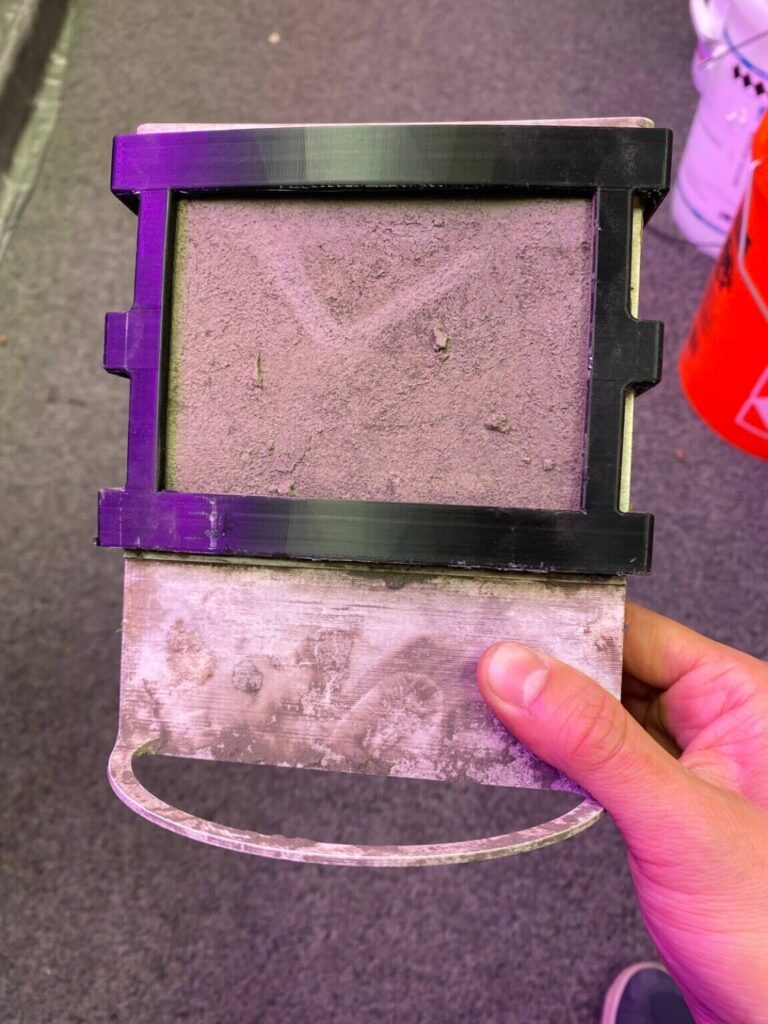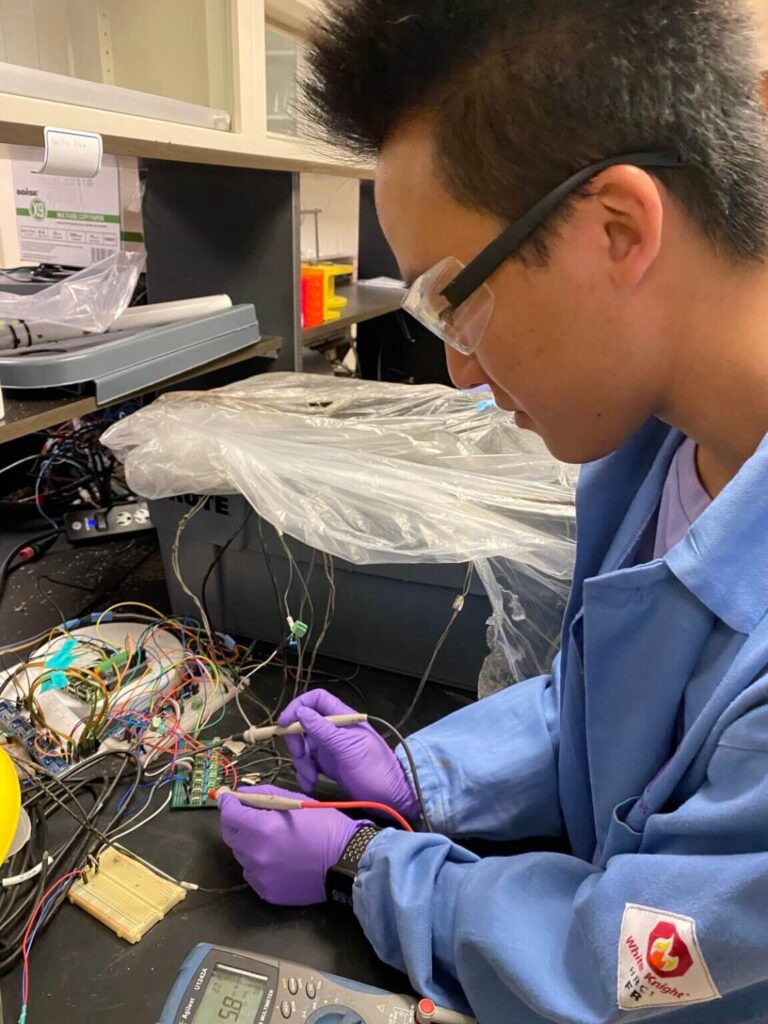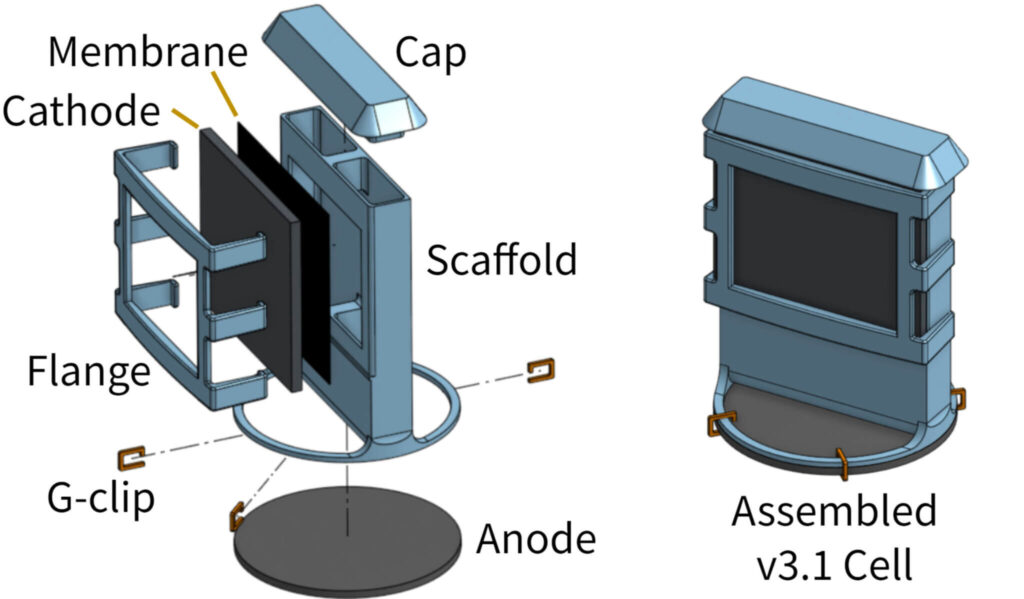
[ad_1]
A brand new gas supply has been proper underneath our ft the whole time — and scientists will not be speaking about oil. Northwestern College researchers have made a revolutionary development in sustainable power by creating a novel gas cell powered totally by microbes in filth. This innovation, concerning the measurement of an ordinary paperback e book, gives a promising renewable power different to conventional batteries, which frequently comprise poisonous chemical substances and have environmentally dangerous provide chains.
The soil-powered know-how, superb for powering underground sensors in precision agriculture and inexperienced infrastructure, might revolutionize how we handle and monitor agricultural environments. In contrast to batteries that comprise hazardous substances and contribute to digital waste, this soil-based gas cell harnesses power sustainably and harmlessly.

The gas cell, coated in filth after being pulled from the bottom. (credit score: Northwestern College)
In assessments, researchers efficiently used the brand new gas cell to energy sensors that measure soil moisture and detect contact, an necessary characteristic for monitoring wildlife. The machine additionally features a tiny antenna for wi-fi information transmission to a base station, enhancing its performance in discipline functions.
Remarkably, the gas cell’s efficiency exceeded comparable applied sciences by 120 %, proving efficient in each moist and dry soil circumstances. This adaptability is essential for dependable operation in various agricultural environments.
Pure Blaze is Google-Free — We Want Your Assist
Contribute Simply $1 Per Month at Patreon to Support the Explanation for Well being Freedom
The analysis is especially important because the workforce has made all their designs, tutorials, and simulation instruments publicly accessible. This open-source method encourages additional innovation and software within the discipline.

Lead researcher Invoice Yen within the lab at Northwestern. (credit score: Northwestern College)
“The variety of units within the Web of Issues (IoT) is continually rising,” says research creator Invoice Yen, a Northwestern alumnus, in a college launch.“If we think about a future with trillions of those units, we can’t construct each one in all them out of lithium, heavy metals and toxins which might be harmful to the atmosphere. We have to discover options that may present low quantities of power to energy a decentralized community of units. In a seek for options, we seemed to soil microbial gas cells, which use particular microbes to interrupt down soil and use that low quantity of power to energy sensors,” Yen continues.
“So long as there may be natural carbon within the soil for the microbes to interrupt down, the gas cell can probably final endlessly.”
The microbial gas cells (MFCs) function like a battery, with an anode, cathode, and electrolyte. Nonetheless, as an alternative of chemical substances, they use micro organism naturally current in soil, which launch electrons through the decomposition of natural matter. These electrons move from the anode to the cathode, creating an electrical circuit that generates energy.
“If you wish to put a sensor out within the wild, in a farm or in a wetland, you might be constrained to placing a battery in it or harvesting photo voltaic power,” explains Yen. “Photo voltaic panels don’t work properly in soiled environments as a result of they get coated with filth, don’t work when the solar isn’t out and take up loads of area. Batteries are also difficult as a result of they run out of energy. Farmers will not be going to go round a 100-acre farm to often swap out batteries or mud off photo voltaic panels.”
Whereas MFCs have been identified for over a century, their sensible software has been restricted as a consequence of efficiency points in low-moisture circumstances. To beat this, Yen and his workforce experimented with totally different designs and located success with a singular perpendicular geometry. The anode, made from carbon felt, lies horizontally, whereas the conductive steel cathode stands vertically, guaranteeing constant hydration and oxygenation.

This schematic exhibits an “exploded view” of the machine. (credit score: Northwestern College)
Researchers additionally plan to develop a completely biodegradable model of their soil-based MFC, transferring away from battle minerals and sophisticated provide chains.
“With the COVID-19 pandemic, all of us grew to become acquainted with how a disaster can disrupt the world provide chain for electronics,” says research co-author Josiah Hester, a former Northwestern school member who’s now on the Georgia Institute of Expertise. “We wish to construct units that use native provide chains and low-cost supplies in order that computing is accessible for all communities.”
The research is printed within the journal Proceedings of the Affiliation for Computing Equipment on Interactive, Cell, Wearable and Ubiquitous Applied sciences.
You may additionally be considering:
Supply: Research Finds
StudyFinds units out to search out new analysis that speaks to mass audiences — with out all of the scientific jargon. The tales we publish are digestible, summarized variations of analysis which might be meant to tell the reader in addition to stir civil, educated debate.
View StudyFinds’s article archive
High picture: The gas cell’s 3D printed cap peeks above the bottom. The cap retains particles out of the machine whereas enabling air move. CREDIT: Invoice Yen/Northwestern College
[ad_2]
 By
By